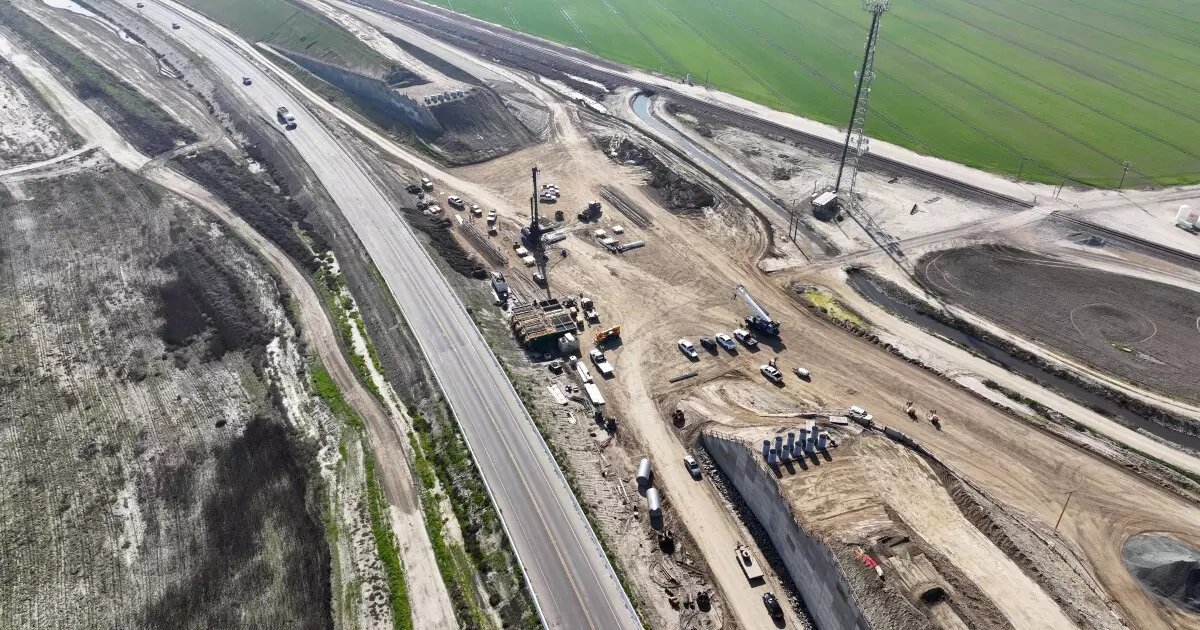The recent decision by the Trump administration to terminate a staggering $4 billion in federal grants for California’s high-speed rail project is more than just a bureaucratic setback; it is a reflection of deep-seated frustrations with a project plagued by chronic mismanagement and unrealistic expectations. While critics paint it as fiscal negligence, others argue that this move signals a necessary reevaluation of federal priorities and the importance of accountability. The administration underscores that federal funds are contingent upon deliverables — a stance rooted in fiscal responsibility and a desire to prevent perpetual taxpayer bailout of a project long underperforming.
However, this action should be viewed through a broader lens. It’s easy to interpret it as political retribution, especially given California’s liberal leadership that often advocates for ambitious green and infrastructure projects. This clash reveals a larger ideological divide: supporters see high-speed rail as a necessary transition toward sustainable transportation, while opponents view it as a symbol of overreach and economic imprudence. The question remains—should federal dollars support projects that consistently miss deadlines and go vastly over budget? This scenario underscores the need for a more rigorous vetting process for federal funding, emphasizing results over romanticized visions.
The Project’s Mismanagement and Cost Escalation
Since its inception, California’s high-speed rail has lamentably become a textbook case of ambitious vision overtaken by reality’s harsh demands. Voters approved $10 billion in bonds in 2008, envisioning a sleek train connecting Los Angeles to San Francisco by 2020. Decades later, the project’s costs have ballooned to nearly $128 billion, with the full route estimating to require an additional $99 billion. This stark disparity highlights systemic failures — chronic delays, underestimated costs, and over-optimistic ridership projections have become the norm rather than the exception.
The project’s leadership often dismissed these concerns, insisting that they could meet their obligations and complete the initial segment from Bakersfield to Merced. Yet, the federal government and independent watchdogs have repeatedly found evidence of mismanagement and misrepresentations. The California High-Speed Rail Authority (CHSRA) has been unable to produce credible plans to close a $7 billion funding gap. This misalignment between promises and reality fosters widespread skepticism and fuels accusations that the project was always more political aspiration than practical infrastructure.
The Political Dimensions and Future Prospects
The political stakes in this controversy extend beyond mere infrastructure. For California’s Democratic leadership, high-speed rail symbolizes environmental progress and innovative urban planning. However, the repeated failures and mounting costs threaten to undermine public trust in government-led initiatives. Despite the federal pullback, California’s leadership is trying to maintain the project’s momentum. Governor Gavin Newsom’s recent budget proposals leverage state funds, including future cap-and-trade revenues, to move forward without federal aid. This strategy indicates a belief that state-level support can insulate the project from federal setbacks, but it also raises fears of perpetuating an already troubled project with more state taxpayer dollars.
The controversy exemplifies a broader ideological debate: should federal and state governments prioritize large-scale projects with uncertain outcomes or focus on pragmatic, fiscally responsible infrastructure investments? From a center-right point of view, the emphasis should be on accountability, transparency, and results rather than romantic visions of high-speed trains that have yet to materialize. Meanwhile, the opposition, often promising green progress and innovation, must confront the reality that large government-led initiatives risk becoming white elephants unless properly managed.
The Path Forward: Lessons from Failure
California’s high-speed rail saga offers vital lessons about the limits of government-led ambitious projects. It reveals that visionary plans require rigorous oversight, realistic planning, and steady accountability. Throwing more money at the problem—be it federal or state—is not a solution; it’s a proven recipe for waste. Instead, future infrastructure endeavors should prioritize cost-effectiveness, tangible benchmarks, and public support rooted in transparency.
The ongoing political tug-of-war mirrors a deeper tension: should government facilitate progress through bold projects or restrain itself to incentivize private sector-driven solutions? While some advocates tout high-speed rail as a green and modern solution, its costs, delays, and mismanagement have tarnished its credibility. Real progress will only come when policymakers realize that infrastructure investments must be driven by pragmatic planning rather than ideological aspirations, and that public funds should support efforts with proven efficiency and accountability.


Leave a Reply